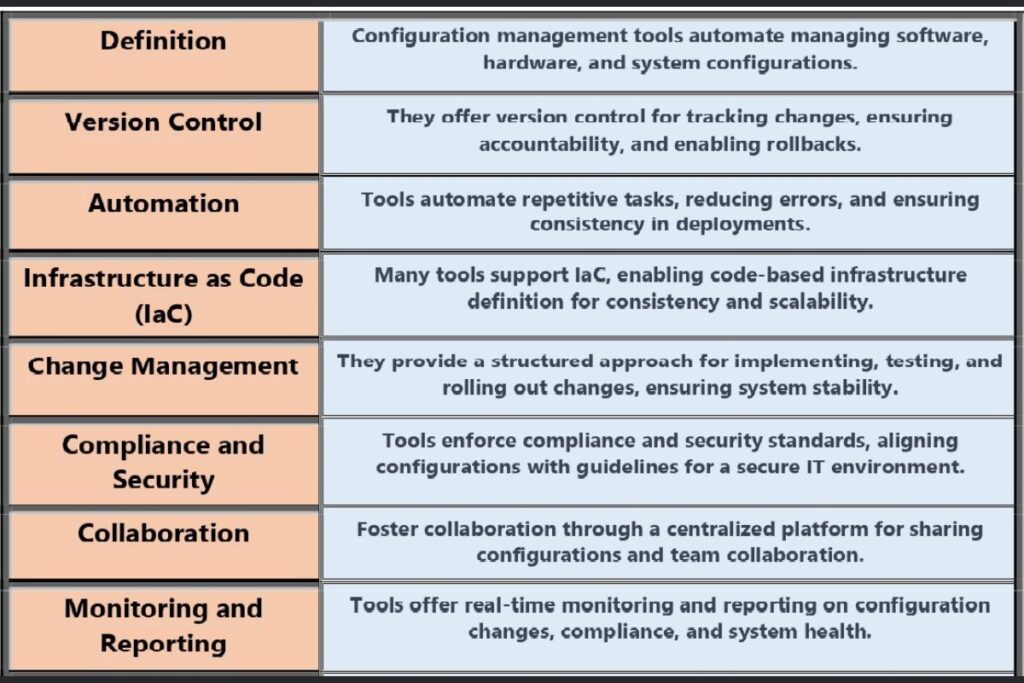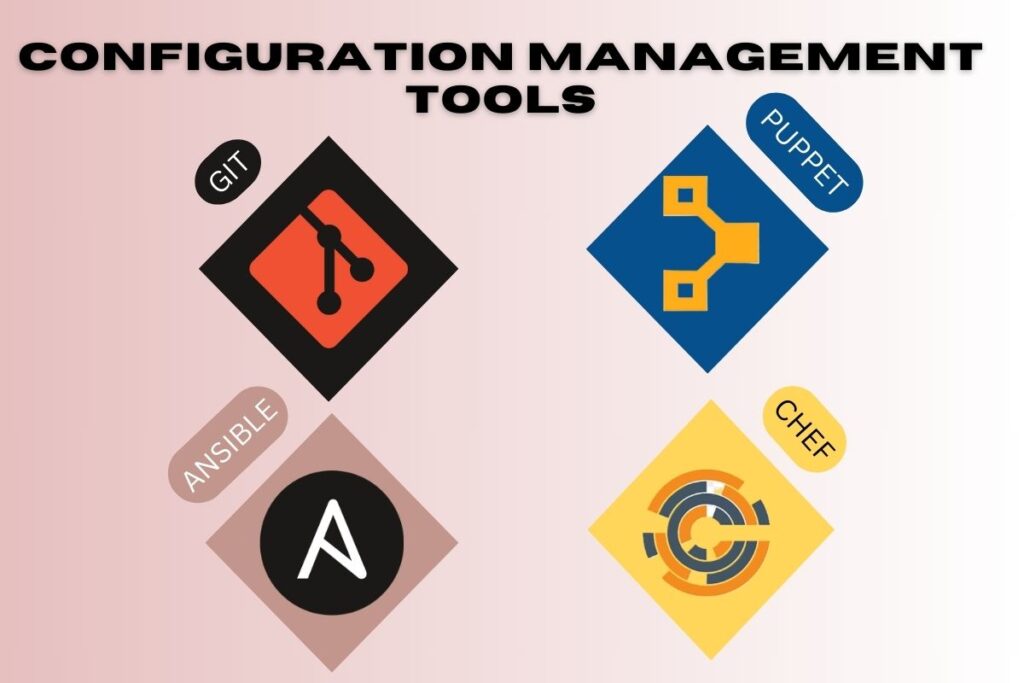Table of Contents
Introduction
Configuration management in DevOps is the practice of maintaining the consistency and integrity of an organization’s infrastructure and software applications. It includes processes, tools, and best practices aimed at ensuring proper configuration, updates, and versioning to support continuous delivery and deployment of software. Key components include version control, automated provisioning, and deployment automation, while popular tools such as Ansible, Chef, Puppet, and SaltStack provide robust solutions for automating infrastructure and application deployment.
The benefits of configuration management include improved system stability, faster deployment cycles, and enhanced collaboration among teams. However, challenges such as managing complex dependencies and ensuring security must be addressed. Overall, configuration management is foundational to DevOps, enabling efficient infrastructure and application management for increased agility and reliability in software delivery
What is Configuration Management in DevOps?

Configuration Management in DevOps is the systematic management and control of software, infrastructure, and system configurations. It involves overseeing these configurations throughout their lifecycle, ensuring consistency and reliability. The goal is to create and maintain a dependable state for various elements within a system. This practice is vital for streamlining processes and reducing errors in dynamic and evolving environments.
Configuration Management is a crucial aspect of DevOps practices as it contributes to the reliability, scalability, and efficiency of software development and deployment processes. It helps teams manage the complexity of modern, dynamic systems by providing a structured approach to handling configurations and changes.
Key Components of Configuration Management
Version Control
Version control is the foundation of Configuration Management, allowing teams to manage and track changes in their codebase efficiently. Git, a popular version control system, allows engineers to communicate easily.
Baseline Management
Creating baselines helps in the development of stable releases by ensuring that modifications are managed and confirmed before implementation. This reduces the danger of giving problems into the production environment.
Change Management
Change management ensures that system changes are properly recorded and regulated. This is important for ensuring a stable development and deployment environment.
Benefits of Configuration Management in DevOps
Enhanced Collaboration
Change management ensures that system changes are properly recorded and regulated. This is important for ensuring a stable development and deployment environment.
Improved Traceability
Troubleshooting and understanding the system’s evolution require the capacity to trace changes back to their the original point. Configuration Management tools help with traceability, improving transparency and accountability.
Risk Mitigation
By controlling changes and maintaining baselines, Configuration Management helps in identifying and mitigating risks early in the development process. This proactive approach prevents potential issues from reaching the production stage.
Popular Configuration Management Tools

Git
Git, with its distributed version control capabilities, is a go-to tool for many development teams. It enables efficient collaboration, branching, and merging, making it a cornerstone in the world of Configuration Management.
Ansible
Ansible focuses on automation and is widely used for configuration management and application deployment. Its simplicity and agentless architecture make it a favorite among DevOps practitioners.
Puppet
Puppet perform well in managing infrastructure as code. It allows for the automated provisioning and configuration of servers, ensuring consistency across different environments.
Chef
Chef automates the process of infrastructure management and application deployment. It is “recipes” define how a system should be configured, providing a scalable and repeatable approach.
Best Practices in Configuration Management
Automation
Automating repetitive tasks ensures consistency and reduces the chance of human error. This is particularly crucial in Configuration Management, where accuracy is key to maintaining a stable environment.
Documentation
Comprehensive documentation is the foundation of effective Configuration Management. It provides information about the history of modifications, which helps with troubleshooting and future development efforts.
Regular Audits
Regular audits of configurations help in identifying and rectifying differences quickly. This early approach enhances the overall reliability of the system.
Challenges in Implementing Configuration Management
Resistance to Change
Implementing Configuration Management approaches is frequently faced with resistance from teams used to traditional development methodologies. Addressing this resistance through education and clear communication is critical.
Lack of Standardization
Incorrect practices among teams may result in confusion and errors. Standardized methods are required for the successful adoption of Configuration Management.
Integration Issues
Integrating Configuration Management tools smoothly into existing workflows can be challenging. Compatibility and interoperability must be carefully considered during the implementation phase.
Tips for Effective Configuration Management
Training and Skill Development
Investing in training and skill development is like giving your team the right tools and know-how to use them well. This way, they can make the most out of Configuration Management tools and get all the benefits they offer.
Continuous Improvement
Think of Configuration Management in DevOps like keeping a well-maintained car. Just as you need to regularly check and update the car’s components to keep it running smoothly, in Configuration Management, we constantly analyze and update our procedures. This ensures that our methods stay responsive and adapt to the evolving needs of our development processes, much like how a car needs regular maintenance to keep up with changing road conditions.
Conclusion
In conclusion, configuration management in DevOps plays a vital role by ensuring the consistency and integrity of infrastructure and software applications. It enables organizations to achieve improved system stability, faster deployment cycles, and enhanced collaboration among teams. While challenges such as managing complex dependencies and ensuring security exist, the use of popular tools like Ansible, Chef, Puppet, and SaltStack, along with best practices such as creating reusable configuration code and implementing continuous integration, can help overcome these challenges. Ultimately, configuration management is foundational to DevOps, allowing organizations to efficiently manage their infrastructure and applications for increased agility and reliability in software delivery.
